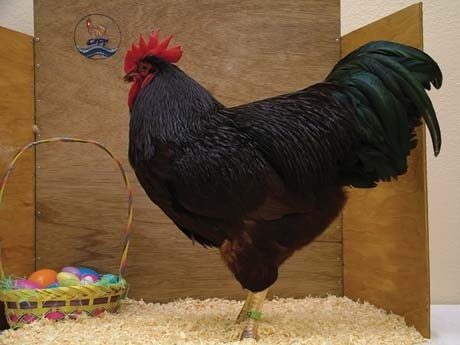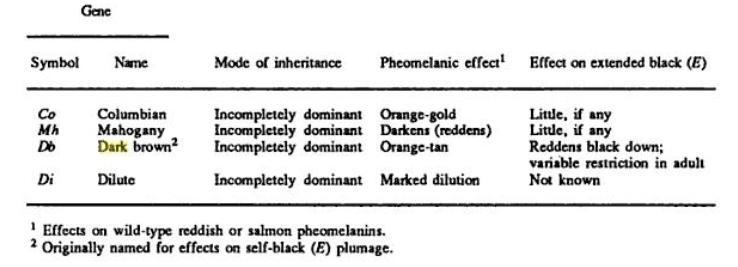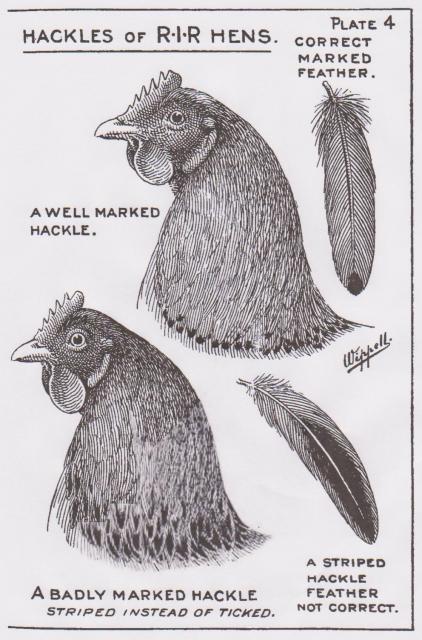Black Tailed Reds carry Db/Db where Reds are Co/Co
Breeders of Reds as well as Henk69 recognize them as a Red Columbian and not a Black Tailed Red.
Chris
Hi,
I am a Db-denier of sorts, but that doesn't prove anything...

Main reason is that Db is often linked to Pg and/or Ml (penciled or spangled).
In my opinion Co is the most common compared to Db.
Co and Db are both columbian-like restrictors. There may be similar genes that behave like one of them.
Co is the better restrictor (removes more black from the body especially on hens) but it is fully suppressed by extended black and birchen.
Db is not. So crossing a NH with an extended black breed should show what they have.
Db removes black from lower hackle. But both RIR and NH are wheatenbased, and wheaten also removes black from the hackle!
Light sussex probably have a hackle black enhancer to compensate.
Db does a bad job removing black pattern from a hen's body. But wheaten does just that!
Co does make an equal bodycolor. Db does this less so.
But if a NH has both Mh and Di this could have an effect that goes against the equal bodycolor.
Co on wheaten often looks quite pale.
I must say that the bodycolor of black tailed/penciled (Db-Pg) roosters is a lot like that of the NH.
Still, Co could be present. As Marvin pointed out, RIR probably have it.
Black tailed is a columbian-like restricted color like true columbian is.
Black tailed japanese bantams are wheaten plus Co here in Holland.
No sign of hackle black in good specimens, but the breed must be selected for that.
Finally, I think that the color of the NH does not need Di and Mh.
The german NH is one of the most beautiful breeds I have seen. The color is a bit boring though.
In Europe and Russia a lot of similar breeds were made. I am baffled that it isn't popular in the US.





